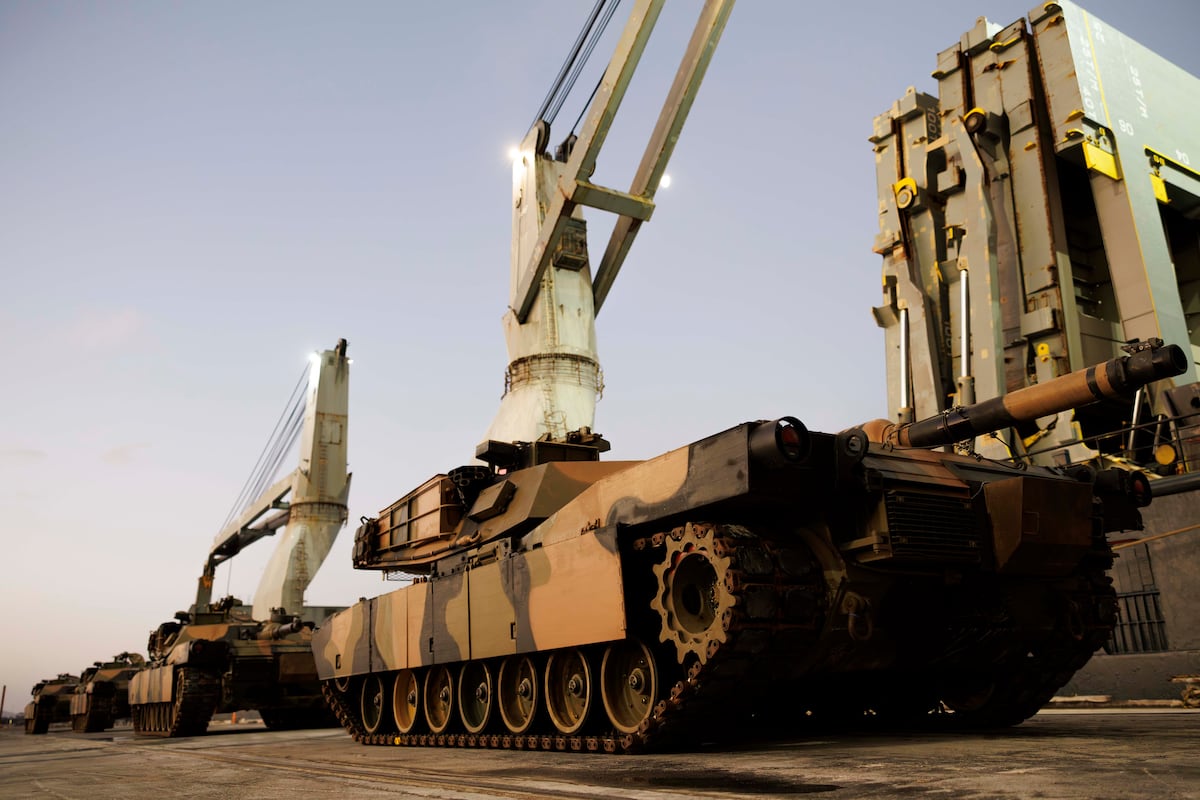



TOWNSVILLE, Australia — A first tranche of second-hand M1A1 AIM Abrams main battle tanks reached Ukrainian soil last week after being donated by the Australian government.
The U.S.-built tanks, still painted in their AusCam camouflage scheme, had been loaded onto a commercial cargo ship in Geelong, Australia, in early May before beginning the long trek to the war-torn nation of Ukraine.
Accompanied by Australian tank crewmen, the armored behemoths arrived in an unidentified port in Europe, possibly Poland, before being serviced for delivery to Ukraine.
Australia’s Department of Defence then said on July 19, “Ukraine has now taken possession of the majority of these tanks, with delivery of the final tranche to occur in the coming months.”
Australia pledged to give Kyiv 49 Abrams tanks that it recently retired. Vasyl Myroshnychenko, Ukraine’s ambassador to Australia, commented on X that “this powerful gesture of solidarity is more than military support – it’s a lifeline, a message that we’re not alone in our darkest hour.”
Valued at approximately A$245 million – around US$160 million – this gift comprises part of A$1.5 billion in assistance that Australia has promised since Moscow invaded Ukraine in February 2022.
The Abrams were modified for Ukrainian requirements before being shipped, with Minister for Defence Industry Pat Conroy noting that “these modified M1A1 Abrams tanks will deliver more firepower and more mobility to the Ukrainian Armed Forces.”
The M1A1 Abrams became available after the Australian Army started receiving batches of new M1A2 SEPv3 Abrams tanks. Canberra ordered 75 of the latest Abrams variant in 2022.
Incidentally, the newer version of the tanks is enjoying a thorough workout in the ongoing Exercise Talisman Sabre, starting in Australia on July 13. One activity, demonstrating interoperability between Australia and the U.S., saw four M1A2 Abrams and an M88A2 recovery vehicle craned aboard an American landing craft.
This activity took place in Townsville on July 19, with the U.S. Army landing craft USAV Paulus Hook moving the armored vehicles south to Gladstone port.
Asked about the importance of Australia rehearsing such amphibious movements, Lt. Eugene Lynch – who is a troop commander from D Squadron, 2nd Cavalry Regiment of the Australian Army – told Defense News: “It’s extremely important. Our focus is on the Indo-Pacific region, and our near region is characterized by archipelagos and the littoral environment. So, it’s absolutely essential to our ability to project force into the region for defense.”
Lynch said the M1A2 SEPv3 represented a significant upgrade over the M1A1, and Australian tankers were therefore “extremely excited” to get their hands on the new kit.
“We know it’s the best,” he enthused.
Asked whether tanks had become less relevant on contemporary battlefields, Lynch immediately alluded to Ukraine. “I think that the production runs in every single tank factory on Earth would disagree. When a tank shows up on the battlefield, it’s the highest-priority target.”
Gordon Arthur is an Asia correspondent for Defense News. After a 20-year stint working in Hong Kong, he now resides in New Zealand. He has attended military exercises and defense exhibitions in about 20 countries around the Asia-Pacific region.
